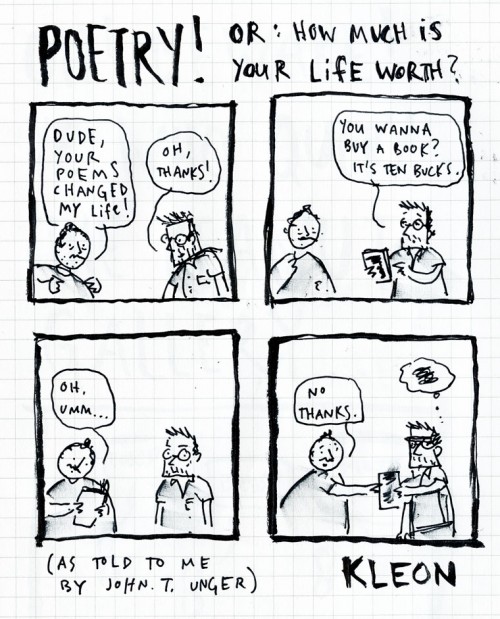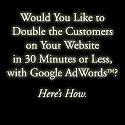

Understanding the Difference Between “Want” and “Want to Buy”
This guest post is by Ryan Barton of The Smart Marketing Blog.
As I was sitting at a café over breakfast, the couple nearby flipped through their Sunday paper. As I tend to do, I eavesdropped on their conversation.
“Will you look at that bedding? That’s wonderful!” “Oh my God, I’d die for those shoes.” “I love that movie, and it’s on sale!”
Aside from my habitual eavesdropping problem, the conversation’s simplification of the “want” impulse is vital to your online success.
Buying versus browsing
There’s a significant, actionable difference between admiration and buying intent.
The first is an attraction, a respect, a good feeling. “That car has beautiful lines.” “Wow, a front-facing camera and it supports Flash?” But regardless of all those positive thoughts, admiration lacks a fulfilled need.
The second says, “not only do I admire this service or product, but it’s exactly what I’m looking for.” “My New Year’s resolution was to focus on marketing, so this is perfect!” The product satisfies a real need—not a flighty want.
Earlier this year, Lemon and Raspberry subscribers said they’d absolutely love to win my ebook, Smart Marketing, during Amy‘s New Year’s blog party.
“Ooooh I’d LOVE to win this! I’m always up for some good marketing insight!!,” said one reader. Another agreed, “I would love to read this book. Maybe I can count it as one of the many books I resolve to read this year.”
That’s flattering; really, lots of kind words. Yet, after the contest ended and the book was awarded, some readers suddenly didn’t want the book; or, more accurately, they didn’t want to pay for it.
This is the “want” gap in action—the difference between liking a product and actually wanting to pay for it.
The “want” gap
Amy’s readers may have liked the idea of reading my book, but they didn’t realize a present need for it. It’s a great idea, and it’d be a nice addition to a library, but there wasn’t enough of an internal need to get them to pull out their wallets.
We see the same principle, but to a greater extent, with larger giveaways. Sure, I’ll take the car, the free cruise, the year’s supply of coffee—but I’m not going to pay for it.
Friend and artist John T. Unger experienced something similar with a book of poetry he wrote; the “want” gap was later brilliantly illustrated by Austin Kleon.
John’s poems had a real, emotional impact on a reader; the reader admired the author. Yet all the admiration in the world couldn’t compete with the prospect’s lack of buying intent.
Asking the right question
Businesses tend to forecast and allocate advertising monies based on consumer feedback, which is unfortunately more “do you like?” than “will you buy?”
That’s what focus groups have become, haven’t they?
“Do you like this new and improved artisan sandwich? How ‘bout this car? Pretty isn’t it? Would you go on vacation with this airline?”
None of those questions ask, “would you buy?” And that’s the question that makes or breaks most launches.
Understanding this gap and how you can bridge it is your way to converting admiring prospects into paying, satisfied, and loyal customers.
How to bridge the “want” gap and boost sales
What you may not realize is that admiration is a big step forward in closing the sale. The prospect has already indicated they appreciate you and your product, but they don’t think they need it. That doesn’t mean you’re out of luck; you can fix this.
Here are five steps I use to effectively bridge the gap between admiration and convincing a prospect to buy.
1. Establish your authority
Chances are, before reading this article, you’d never heard my name. If you’re launching a product of your own, you may face the same challenge—obscurity.
If I had released my ebook under Darren’s name instead of my own, the sales would’ve been drastically different than my initial figures. Darren’s an established figure in the industry. Over 167,000 subscribers and 19,000 Facebook fans are testament to this. His community buys into his history of success. My own success isn’t global like Darren’s, but that doesn’t mean it’s not as relevant.
That’s why the endorsement of Hall of Fame speaker and bestselling author, Scott McKain, was so powerful. Scott had a lot ofkind words about my book—and his review told new prospects my book wasn’t a scam, it was real and unique, and they needed it.
That’s the power of word-of-mouth marketing. But it’s leveraging these words that helps you confirm legitimacy and close the sale.
2. Create value
It’s pompous to assume that because you have a product, it’ll be bought. Give prospects a reason to buy. What’s in it for them? Show them value and security in their purchase.
For my own book campaign, my value offering included free quarterly updates. Every quarter, I send my customers an updated digital file that highlights new industry trends and developments. This makes my ebook a living book—it doesn’t gather digital dust, it’s a constant resource.
Plus, it maintains my personal brand awareness among my clientele in a most personal manner.
I also went so far as to include a 100% results-and-satisfaction guarantee with every purchase. Yes, I’m that confident in my content. It works, so why wouldn’t I offer a guarantee?
And as for the prospect, why wouldn’t they buy? There’s absolutely zero risk in making the purchase. If they were apprehensive or worried they’d get burnt, this guarantee eliminates those fears. What’s more, I’ve never had a request for a refund—it’s a guarantee I’ve never been called on.
What type of value-added element can you include in your launch that convinces your prospect that they can’t afford to not buy from you? Can you offer a limited-time price reduction to create a sense of urgency? Or a creative incentive to reward multiple purchases?
3. Put their needs in lights
You launched your product for a reason: you recognized a demand, a need. So don’t be ashamed to tell your audience that you know it. Speak directly to them.
In my case, that meant telling small business owners and first-time entrepreneurs that I understand the daunting challenge they face in marketing themselves. What’s an effective strategy? What offers the greatest ROI? I know the thought of their business failing keeps them up at night. Moreover, I understand that heavy feeling—I’ve been there. And it’s difficult to navigate through new business decisions.
But simply telling prospects you understand their need isn’t enough. You also need to satisfy it. Which brings us to your solution. In my case, I hold the marketing road map to their success.
4. Spell out your solution
For my small business owner audience, it wasn’t enough to say, “Don’t worry about your business failing, I wrote a book on marketing.”
I needed to take a step back and detail the topics I’d covered—targeted marketing, brand differentiation, social media ethics, blogging, and so on—and explain how each topic plays into their success.
Andy Nulman uses the analogy of “virgin contact lenses” as a great way to remove yourself from something you’re deep into, to gain valuable perspective. You, yourself, are in-the-know. You understand what you offer, since you’re the product creator. But for the first-time prospect, you need to say exactly what you do. Assume nothing on their part. Look at your product the way a first-time prospect would, taking nothing for granted.
You’ve highlighted their need, and you’ve detailed exactly what you’re providing. Now, explicitly tell your prospects with confidence, “I am the solution. My product will fix your problem.”
5. Show them what others have
You’re at the mall; you’re hungry. You walk towards the food court, and as you get closer, you begin to smell the variety of foods. “What do I want? What am I in the mood for?” you ask yourself.
And as you arrive at the food court entrance, before you stand 15 different restaurant choices, people with trays of food rushing to and from tables. Your gaze moves across the large room, scanning the signs and lines of each of the restaurant choices. Asian food? Not bad. Pizza place: ghost town. Sandwiches … not really in the mood. But the burger joint is hoppin’.
Without saying a word, every person in each line is telling you their preference—the majority favored the burger over the pizza. And that makes you wonder, what is it about the burger that everybody loves so much? You don’t want to miss out on what the people in the burger line are enjoying. Now, your decision is made: burger it is.
In the digital food court, it’s similar; it’s the online equivalent of, “I’ll have what she’s having.”
Show prospects how much your customer base supports you. Show them you’re popular, show them what other customers are buying and how they’re benefiting from it, and force the inactive community to buy in and be part of the “next big thing.”
The hype, the tangible energy in your community, your popularity—they’re all extremely powerful selling tools.
What people want
Your blog, your business, your campaign, your new product—should be less about what you think people want, and more about what your prospects will actually act on. Want to be profitable? Then that’s your focus: what people want.
Save yourself time and money. Understanding this “want” gap and bridging it—conquering it—improves your conversion rate, it motivates you through your new-found success, and it takes your efforts to a competing level.
How have you experienced the “want” gap in your blogging efforts? And how have you bridged it?
Ryan Barton is the author of the “Smart Marketing” eBook and he writes at The Smart Marketing Blog for Small Business Success; you can follow him on Twitter, where he shares entirely too much information. He wrote “Smart Marketing” with the intent that small businesses would glean insightful information and tangible marketing strategies so they too, could compete competitively with industry giants.
Post from: ProBlogger Blog Tips
Facebook comments:
No Comments »
No comments yet.
RSS feed for comments on this post. TrackBack URL
Leave a comment
















